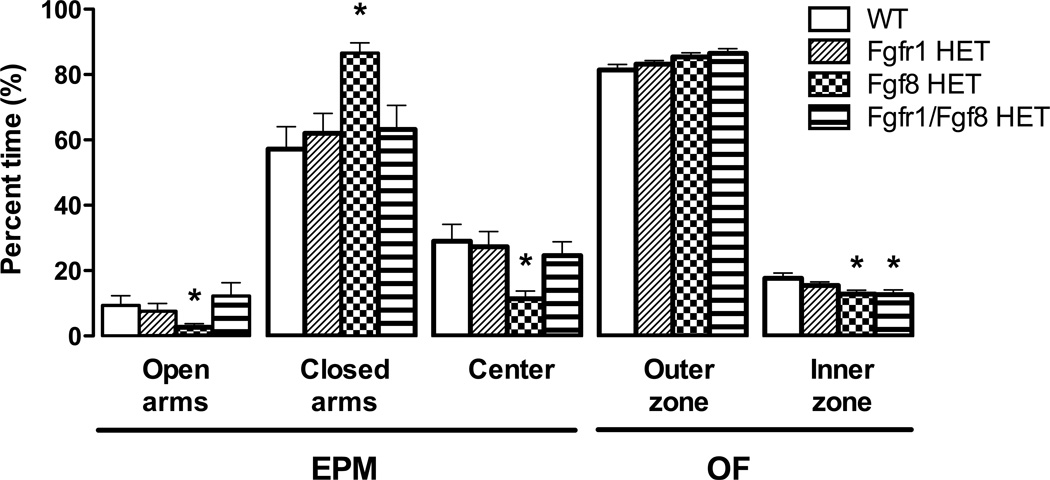Fig. 2.
The elevated plus-maze (EPM) and open-field (OF) tests were used to detect anxiety-like behavior in Fgf-deficient mice. Only Fgf8 HET mice exhibited increased anxiety-like behavior in the EPM compared to WT controls as measured by a lower percentage of time spent in the open arms (n = 13–14 WT, n = 14–15 Fgfr1 HET, n = 16–17 Fgf8 HET, n = 13 Fgfr1/Fgf8 HET). However, both Fgf8 HET and Fgfr1/Fgf8 HET mice spent significantly less time in the inner zone of the OF (an indication of increased anxiety-like behavior) compared to WT controls (n = 15 WT, n = 14–15 Fgfr1 HET, n = 21–22 Fgf8 HET, n = 18–19 Fgfr1/Fgf8 HET). *p < 0.05 vs. WT; bars represent the mean ± SEM.

